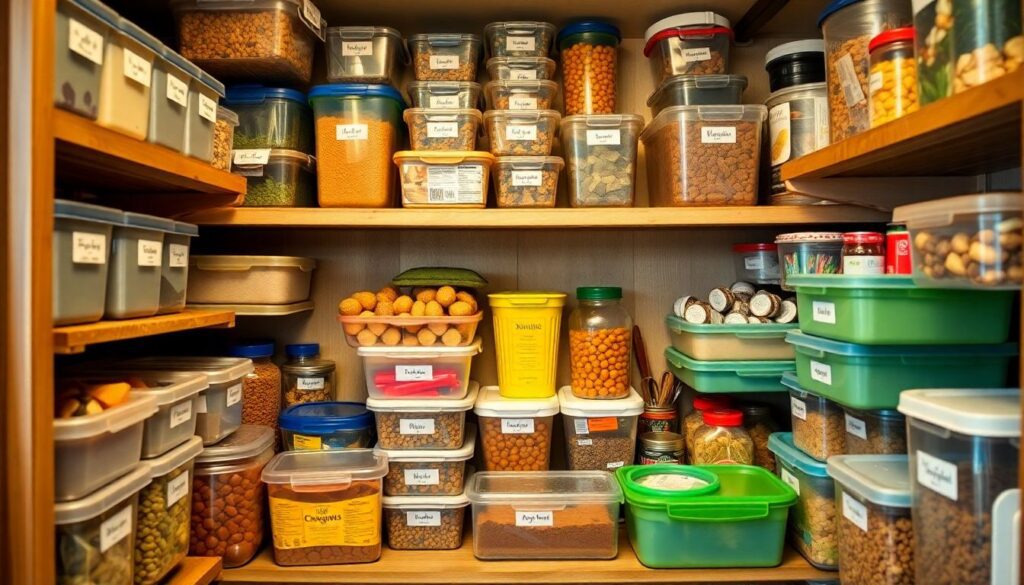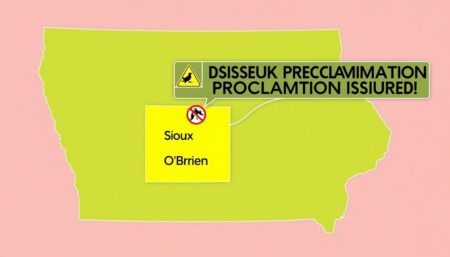Welcome to our playful and engaging exploration of the world of ‘prepping’! In this article, we’ll delve into the fascinating realm of emergency preparedness, from the humble beginnings of stockpiling everyday essentials to the more extreme measures taken by those preparing for the apocalypse.
From eyeliner hoards to emergency food kits, explore the growing trend of prepping and its unexpected allure.
Imagine stepping into a well-stocked prepper’s pantry, where order and chaos uniquely intertwine. Floor-to-ceiling shelves are lined with labeled Tupperware containers, each a testament to organization amidst potential chaos. They hold not just your usual staples like rice, beans, and flour, but also dehydrated fruits, powdered eggs, and even freeze-dried ice cream sandwiches—a touch of comfort in any situation.
Nestled among these are emergency food kits, packed with military-precision. These aren’t just grab-and-go bags, but thoughtfully curated supplies that could sustain a family through a week of uncertainty. There are high-calorie energy bars, water purification tablets, and even compact cooking stoves that could make a gourmet meal out of the most basic ingredients.
But what truly brings this pantry to life is the mix of practical and quirky items. A vintage crank-operated coffee grinder sits next to a high-tech solar-powered phone charger. A box of old-fashioned hard candies shares space with a state-of-the-art emergency radio. There’s a shelf dedicated to heirloom seeds, promising a future garden, and another holding an eclectic collection of board games to keep spirits high during low times. This prepper’s pantry is more than just a storage space; it’s a fortress of solace and sustainability, ready to weather any storm.
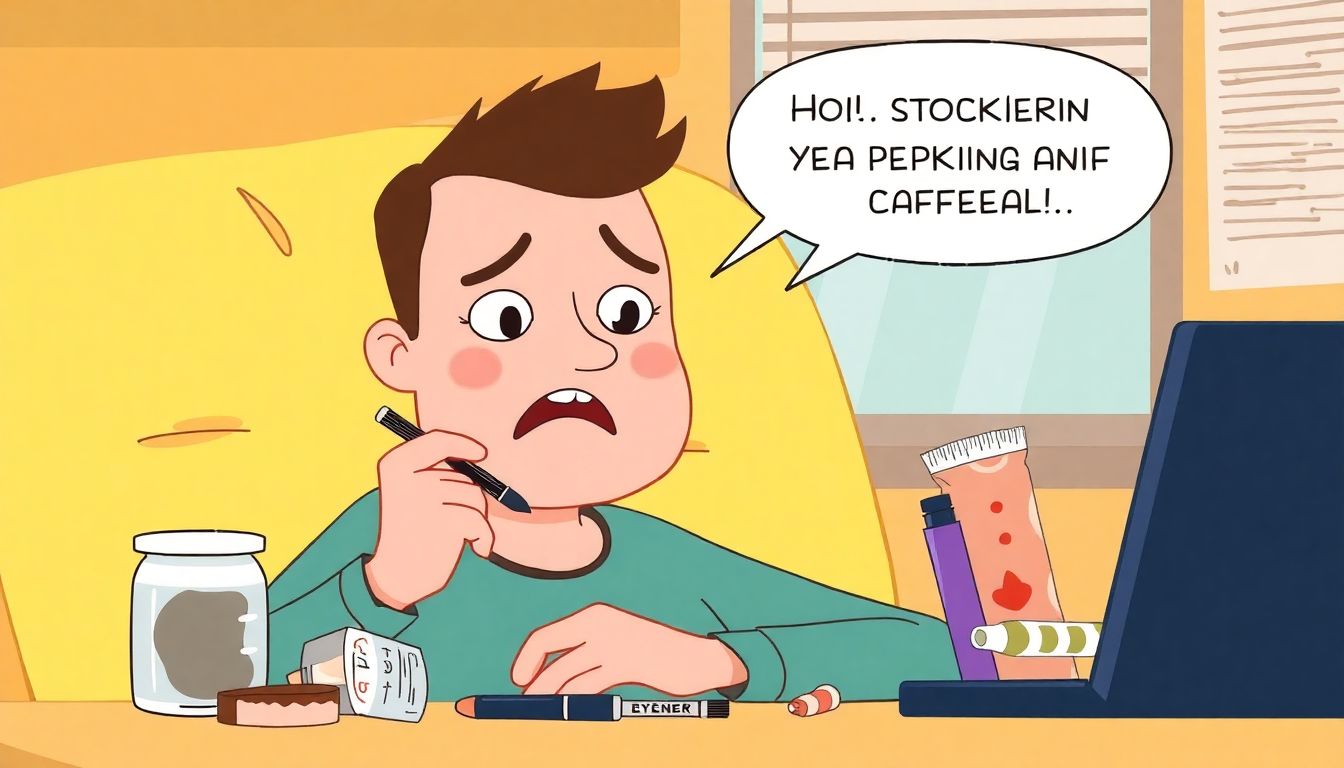
The Accidental Prepper
Have you ever found yourself accidentally becoming a prepper? I never thought I would, but last year, during the lockdown, I found myself doing just that. It started innocently enough. I was running low on my favorite eyeliner—you know the one that makes your eyes pop like no other. I decided to order a few more than usual, just to avoid running out since I wasn’t sure when I’d be able to get to the store again. One thing led to another, and before I knew it, I had enough eyeliner to last me through a zombie apocalypse!
As the days turned into weeks, my ‘just-in-case’ mindset didn’t stop at eyeliner. I found myself squirreling away extra bags of my favorite coffee beans. I mean, who could survive a lockdown without their favorite brew? Then it was specialty teas, then my favorite brand of chocolate. My pantry started looking like a doomsday bunker, but filled with comfort items rather than cans of beans. I even started organizing them by expiration date—something I’d never done before!
My ‘prepping’ behavior didn’t stop at food and makeup. I found myself buying extra books by my favorite authors, just in case I ran out of things to read. I even started a small herb garden in my kitchen, telling myself it was a fun project, but secretly feeling like I was preparing for a future where fresh herbs might be scarce.
Looking back, I can’t help but laugh at my unintentional prepping. I never thought I’d be that person with a stockpile of eyeliner and enough coffee to keep a small army caffeinated. But there I was, finding comfort in the familiar, preparing for an uncertain future in my own small way. It was a reminder that even in the strangest of times, we find ways to cope, to nest, to prepare. And who knows? If there ever is a zombie apocalypse, at least I know I’ll be ready with perfectly winged eyeliner and a great cup of coffee!
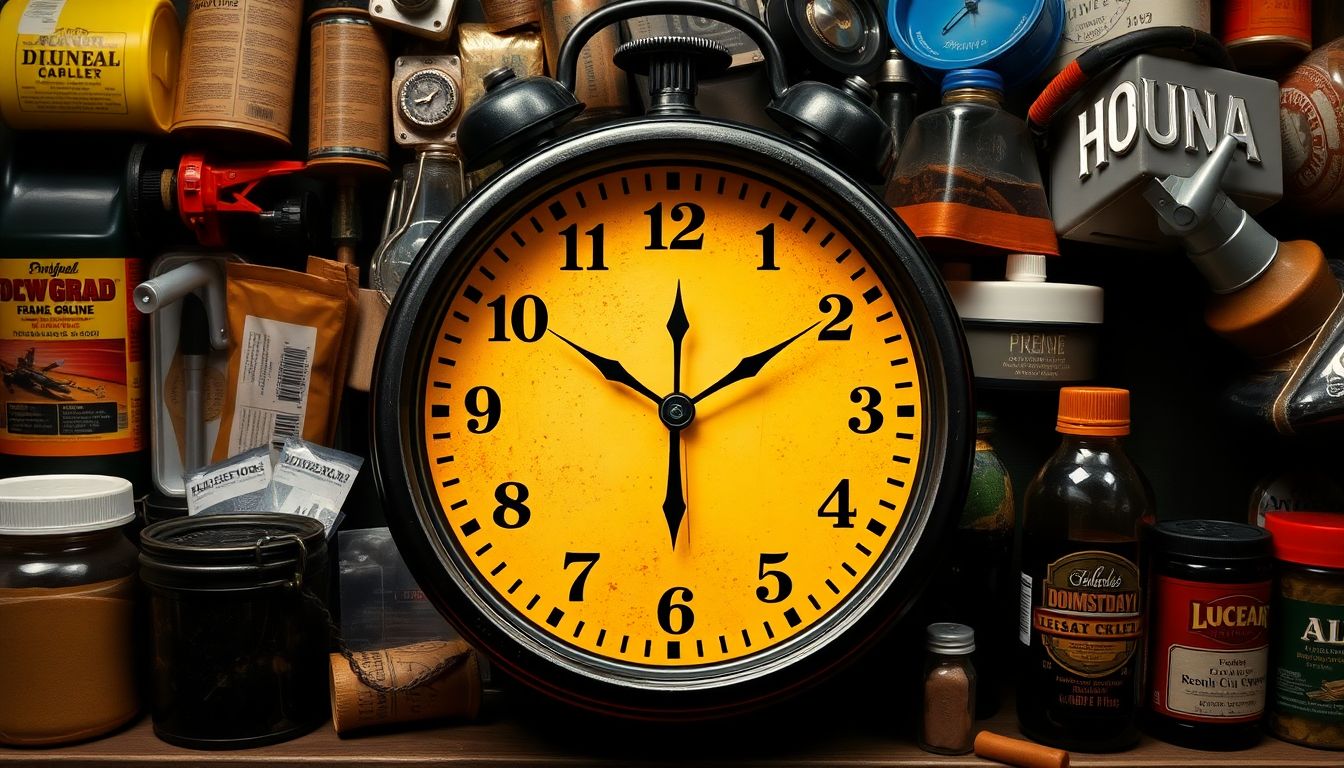
The Doomsday Clock is Ticking
The Doomsday Clock, a symbolic representation of the likelihood of global catastrophe maintained by the Bulletin of the Atomic Scientists, is currently set at 90 seconds to midnight, the closest it has ever been. This setting reflects the urgent and compounding crises that threaten humanity’s existence, including nuclear threats, climate change, and biological dangers like pandemics. The clock’s position has sparked global conversations about preparedness and survival, no longer confined to the fringes of society.
The prepping industry, once a niche market, has grown exponentially in response to the Doomsday Clock’s alarming status. More people are feeling the urgency to prepare for the worst, driving the demand for survival essentials. This industry, now valued at billions of dollars, offers a wide range of products from emergency food supplies to underground bunkers.
The influence of the Doomsday Clock on the prepping industry is evident in several ways:
- Increased Awareness: The Doomsday Clock has raised public awareness about global threats, driving more people to consider preparedness.
- Product Innovation: The industry has responded with innovative products designed to address various doomsday scenarios, from nuclear fallout to long-term power outages.
- Mainstream Acceptance: Prepping is no longer stigmatized but viewed as a responsible precaution, thanks in part to the Doomsday Clock’s stark warnings.
Furthermore, the COVID-19 pandemic has also bolstered the prepping industry. It served as a wake-up call, demonstrating the reality of sudden, global disruptions. This has led to a surge in people purchasing emergency supplies and planning for future crises, further driving the growth of the prepping industry. The Doomsday Clock’s ominous ticking has not only heightened public anxiety but also sparked a sense of responsibility and proactivity, fueling the growth of the prepping industry.
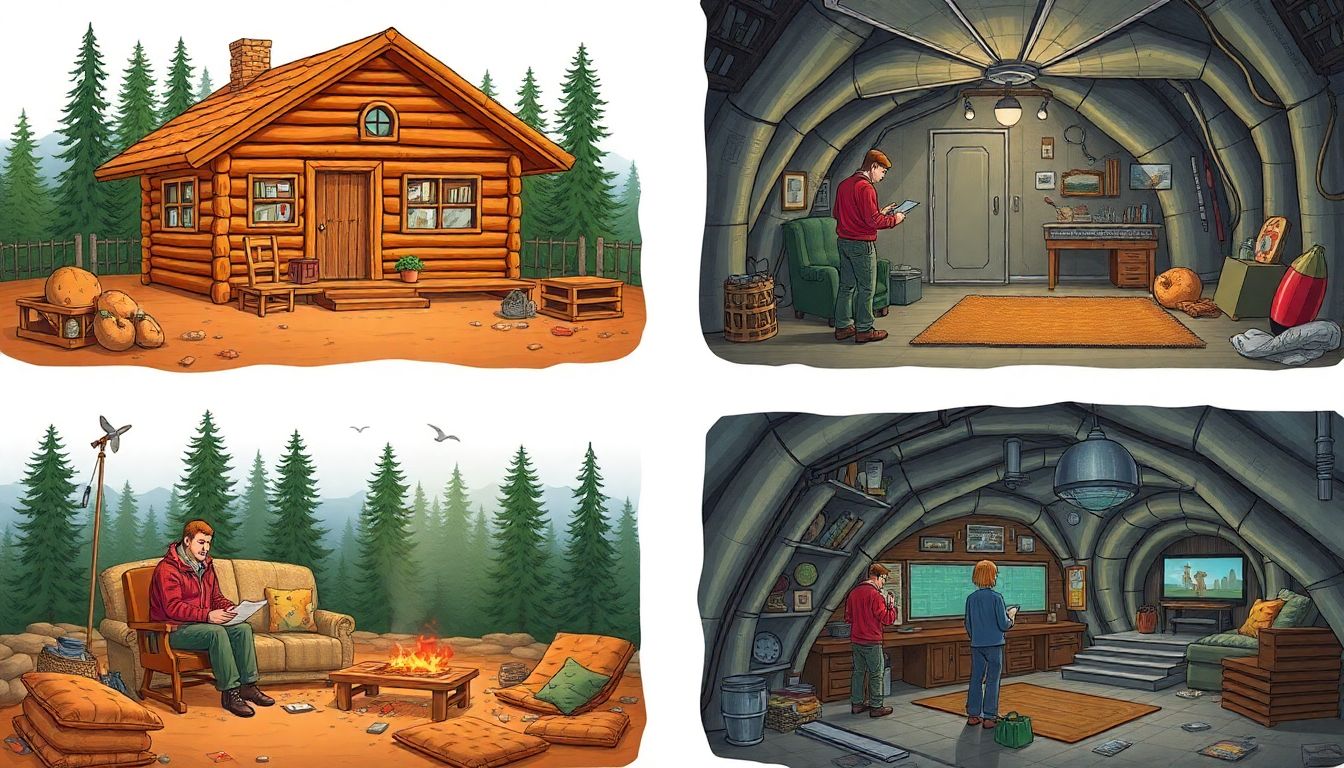
The Prepper Lifestyle
In the fascinating world of preparedness, preppers span a vast spectrum of backgrounds, budgets, and strategies. At one end, we have homesteaders, who focus on self-sufficiency and living off the land. They grow their own food, raise livestock, and often possess practical skills like carpentry, sewing, and canning. Their preparations are more about a lifestyle change than a reaction to potential disasters.
Then, there are the survivalists, often equipped with extensive knowledge of wilderness survival techniques. They invest in gear like bug-out bags, water filters, and multi-tools. Their plans often involve evacuation strategies and off-grid living. Here’s a glimpse of their prepper priorities:
- Emergency shelter and warmth
- Water purification methods
- Portable, non-perishable food
- Self-defense tools
Moving up the scale, we find high-net-worth preppers who invest in state-of-the-art survival solutions. These individuals might purchase luxury bunkers, complete with air filtration systems, generators, and high-end food supplies. Some even invest in private security teams and armored vehicles.
At the far end of the spectrum are the billionaire preppers, who spare no expense in their preparations. They invest in custom-built panic rooms, underground bunkers with luxury amenities, and even private islands or remote ranches for evacuation purposes. Some have been known to fund scientific research on survival techniques and technologies. Their preparations often include:
- Private jets for quick evacuation
- Fully-stocked luxury bunkers
- Investments in renewable energy
- Funding for cutting-edge survival research
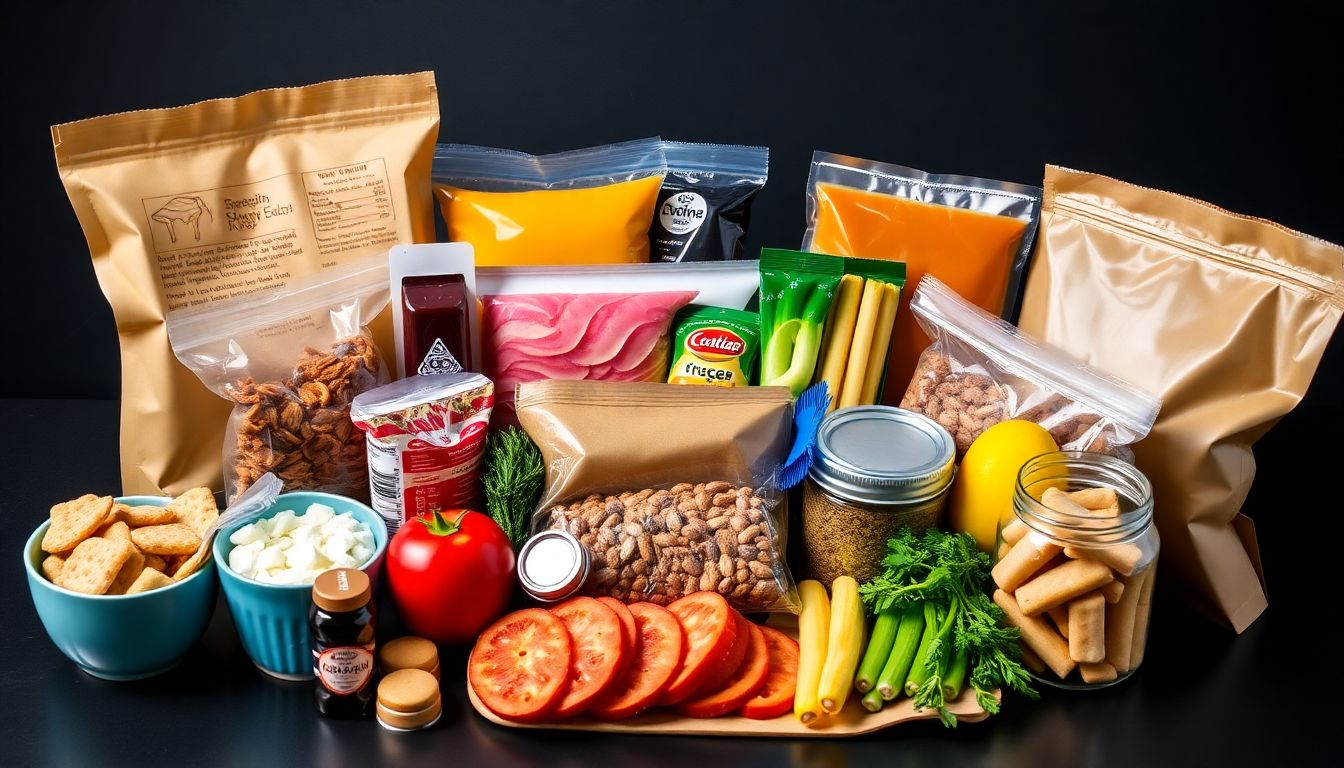
The Allure of Emergency Food Kits
Emergency food kits, often tucked away in basements or pantries, are more than just a collection of edible items—they are a source of psychological comfort and peace of mind for many. The mere presence of these kits, packed with non-perishable food items, provides a sense of security and preparedness. This psychological comfort comes from knowing that, in the event of an emergency, one’s basic needs will be met.
The contents of an emergency food kit vary, but they typically include a diverse range of items designed to sustain a person or family through a crisis. These kits often contain:
- Canned goods such as beans, soups, and fruits
- Dry goods like rice, pasta, and cereals
- High-energy foods such as protein bars and nuts
- Comfort foods like chocolate and coffee
- Water purification tablets or filters
Each item is chosen for its long shelf life, nutritional value, and ease of preparation.
Beyond the practical aspects, these kits also serve a deeper emotional purpose. They act as a tangible reminder of one’s ability to plan and prepare for the unexpected. This can be particularly reassuring in times of uncertainty or stress. The act of assembling or purchasing an emergency food kit can itself be therapeutic, providing a sense of control and empowerment.
Moreover, emergency food kits foster a sense of community and shared responsibility. Families and individuals often discuss and plan together, ensuring that everyone’s dietary needs are met and that all members know how to access and use the kit in an emergency. This collective preparation strengthens bonds and reinforces the idea that, in a crisis, we are not alone but part of a larger, supportive network.
FAQ
What is prepping, and why is it gaining popularity?
What are the essential items to include in an emergency food kit?
- Non-perishable food items with a long shelf life
- Water or water purification supplies
- A can opener
- A first aid kit
- A flashlight and extra batteries
- A portable radio
How can prepping be seen as a form of wellness?
What are some common misconceptions about preppers?
How can I start prepping without breaking the bank?
- Gradually building up your supplies over time
- Focusing on multi-purpose items
- Learning valuable skills like first aid or basic repairs
- Repurposing items you already have



